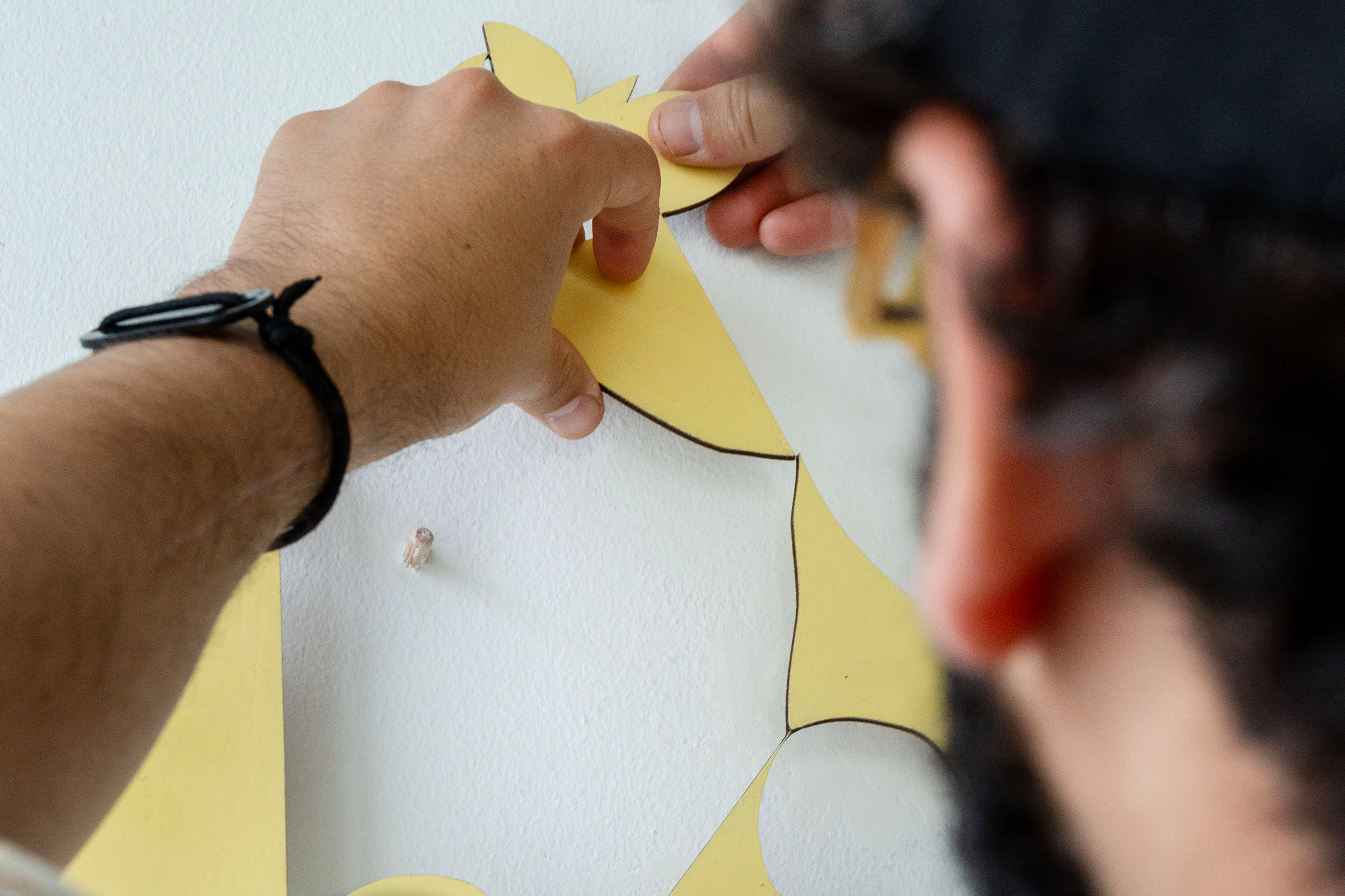If You Asked Me About A Flower
What Would I Say
Exhibition runtime:
October 05 / 31 October 2024
Opening show: Saturday 05 October
5pm to 8pm
Regular opening times: Friday/Saturday/Sunday
3pm to 6pm
Open also by appointment
Where:
FZ Atelier
Eva Besnyöstraat 36
1087KR Amsterdam NL
If You Asked Me About A Flower
What Would I Say
Exhibition runtime:
What Would I Say
Exhibition runtime:
October 05 / 31 October 2024
Opening show: Saturday 05 October
5pm to 8pm
Regular opening times: Friday/Saturday/Sunday
3pm to 6pm
Open also by appointment
Opening show: Saturday 05 October
5pm to 8pm
Regular opening times: Friday/Saturday/Sunday
3pm to 6pm
Open also by appointment
Where:
FZ Atelier
Eva Besnyöstraat 36
1087KR Amsterdam NL
FZ Atelier
Eva Besnyöstraat 36
1087KR Amsterdam NL






G.E.C. /
IF YOU ASKED ME ABOUT A FLOWER
WHAT WOULD I SAY
2024
This work mixes figurative and abstract language, repetition and evolutionary change, to deal with topics of identity and representation while posing questions on subjectivity and intersubjectivity.
Viewers are disoriented but placed in an active position, free to interpret and reconstruct creatively the scattered landscape around them, constituted by the representation of a single subject (a flower) that has been fragmented and displayed around them in several parallel reconfigurations.
The subject of the ‘flower’ is merely a starting point, as its fragmentation and all its simultaneous variations constitute the work.
It is a vision of the contemporary work of art which does not position itself at the termination point of the creative process (a ‘finished product’ to be contemplated), but more as a site of navigation, a portal, a generator of ongoing activities in perpetual evolution.
The public is encouraged to question what is in front of their eyes—in the context of the exhibition as well as metaphorically in their lives—and to go beyond the immediate appearance, choosing plurality over singularity, finding similarities among differences while celebrating variability.
Viewers are free to explore multiple abstract shapes and structures created by dismantling, scrambling, recomposing copies of the initial flower into new alternative and simultaneous narratives, suggesting an open-minded approach for challenging the representation of everything around us, actively envisioning new configurations and significances.
Viewers are disoriented but placed in an active position, free to interpret and reconstruct creatively the scattered landscape around them, constituted by the representation of a single subject (a flower) that has been fragmented and displayed around them in several parallel reconfigurations.
The subject of the ‘flower’ is merely a starting point, as its fragmentation and all its simultaneous variations constitute the work.
It is a vision of the contemporary work of art which does not position itself at the termination point of the creative process (a ‘finished product’ to be contemplated), but more as a site of navigation, a portal, a generator of ongoing activities in perpetual evolution.
The public is encouraged to question what is in front of their eyes—in the context of the exhibition as well as metaphorically in their lives—and to go beyond the immediate appearance, choosing plurality over singularity, finding similarities among differences while celebrating variability.
Viewers are free to explore multiple abstract shapes and structures created by dismantling, scrambling, recomposing copies of the initial flower into new alternative and simultaneous narratives, suggesting an open-minded approach for challenging the representation of everything around us, actively envisioning new configurations and significances.
Taking inspiration from what happens in Nature in which very different species share the same identical DNA building blocks but arranged in different ways, all these artworks present small arrangement variations which lead to vastly different results in the way they appear.
Flowers can have similar features but different configurations, can display mutations, or can combine together fragments from different sets, producing compact arrangements or grouped into families.
At the forefront is the generative process that redefines the initial shape of the flower each time, not the artworks of the flowers themselves.
The portrayal of each flower is displayed in a continuous rearrangement of its ‘elementary components’ (the same fragments generated by the initial dissection gesture of a one-line scribble), rather than on a unique configuration (singular interpretation). Many variations of that flower are created simultaneously by combining almost identical copies of its basic elements, connected and arranged in different ways. Artworks are reconstructed abstractedly using homogeneous fragments from similar sets or by blending together sets of fragments from different ones.
At the forefront is the generative process that redefines the initial shape of the flower each time, not the artworks of the flowers themselves.
The portrayal of each flower is displayed in a continuous rearrangement of its ‘elementary components’ (the same fragments generated by the initial dissection gesture of a one-line scribble), rather than on a unique configuration (singular interpretation). Many variations of that flower are created simultaneously by combining almost identical copies of its basic elements, connected and arranged in different ways. Artworks are reconstructed abstractedly using homogeneous fragments from similar sets or by blending together sets of fragments from different ones.